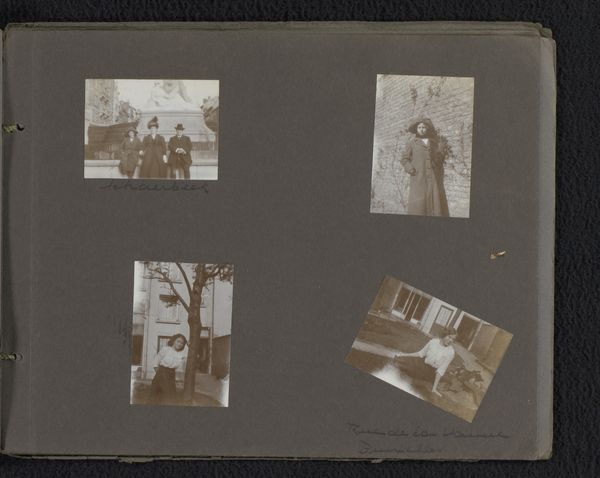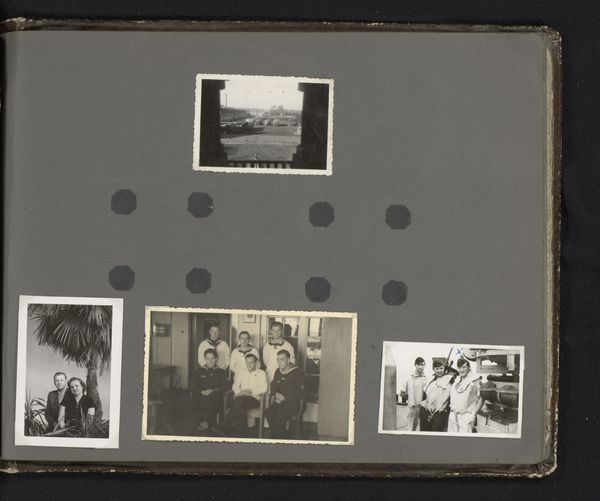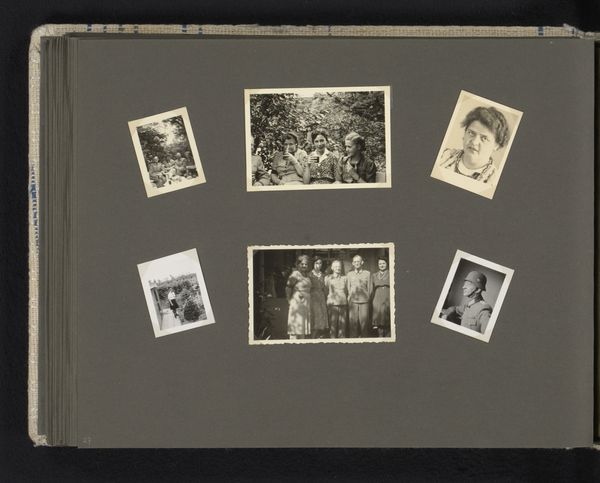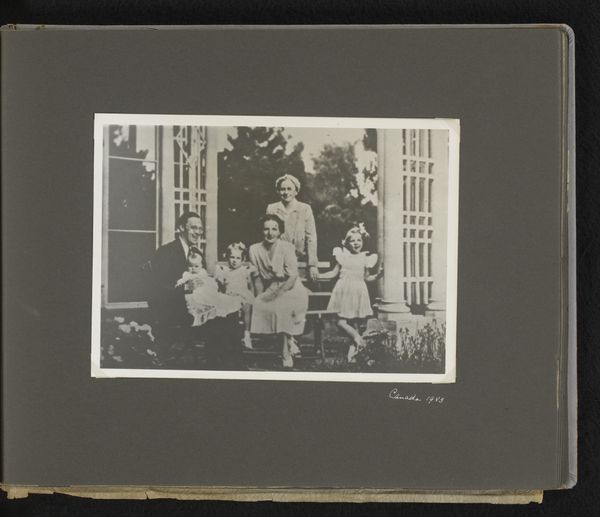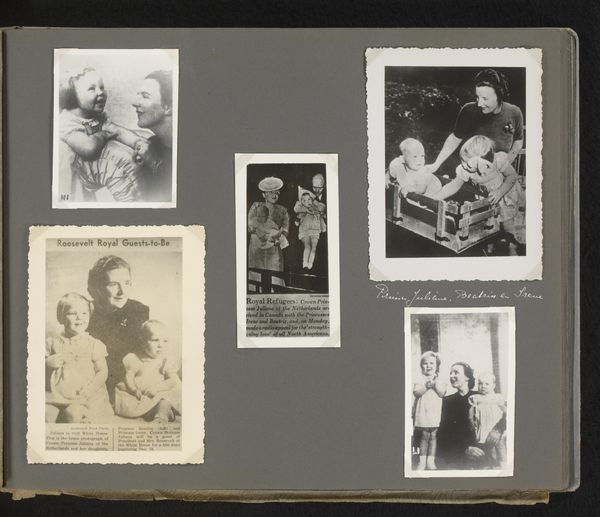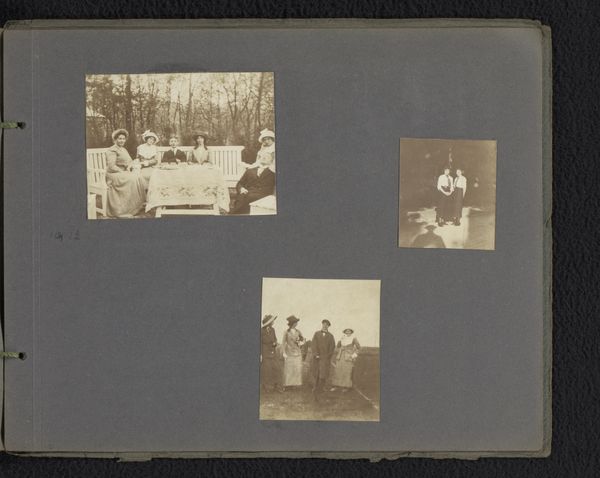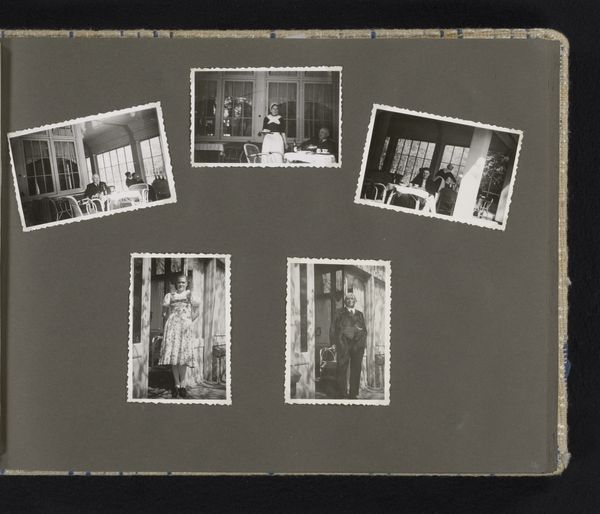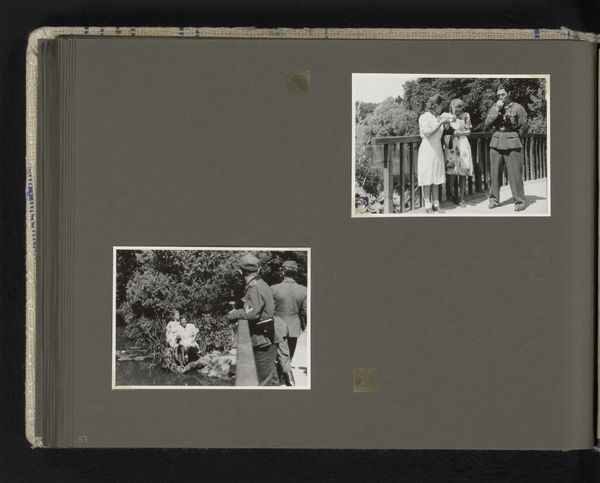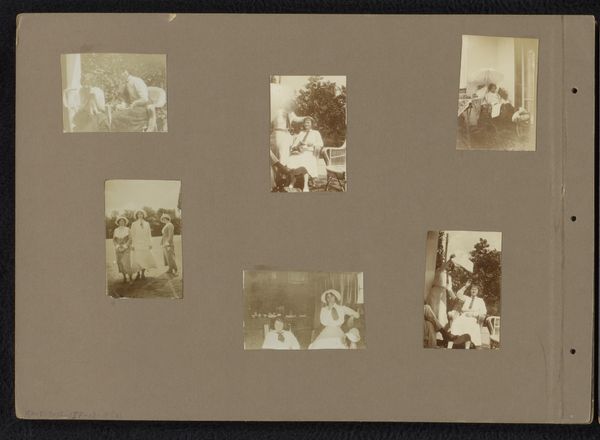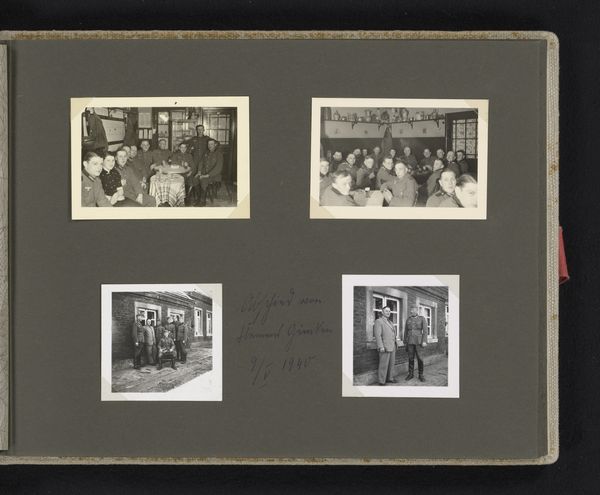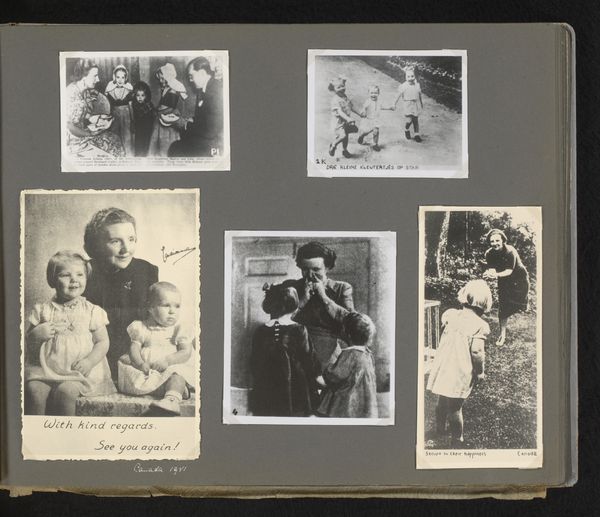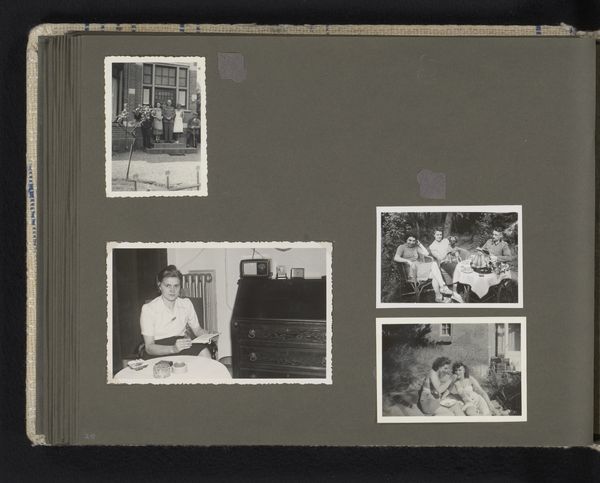
photography, albumen-print
#
portrait
#
still-life-photography
#
photography
#
group-portraits
#
modernism
#
albumen-print
Dimensions: height 132 mm, width 91 mm, height 225 mm, width 275 mm
Copyright: Rijks Museum: Open Domain
Curator: Here we have an intriguing work titled "Ottawa (Canada) Voorjaar 1943," created in 1943 by Anefo. This particular piece from the Rijksmuseum’s collection presents a selection of photographs arranged within what seems to be an album. Editor: It strikes me as almost… deliberately unassuming. The monochrome prints, the mundane subject matter – families, gardens… it’s an intimate glimpse into everyday life. Yet, something about its composition feels strangely detached. Curator: That sense of detachment, I think, comes from understanding the broader context of 1943. This seemingly ordinary portrayal of springtime domesticity in Ottawa gains weight when considered against the backdrop of World War II. It hints at how life continued—or attempted to—even amidst global turmoil. Editor: Exactly. It's easy to overlook the photograph of the group as merely a family portrait. But looking at their faces and clothing, it's clearly more formal and constructed than your typical snapshot. Consider the politics embedded in depicting idealized family structures and promoting ideas of “home” during times of immense social and political upheaval. Curator: And, to add, consider that it is Canada. What narratives do we apply to countries that are on the 'winning' side of a world war, vis-a-vis those on the 'losing' side? What public roles were families serving in creating certain representations? Editor: What I am now asking is who has control of the camera's gaze, and to what effect? Take a closer look and you'll observe there are four photos and four themes, is Anefo asking for the viewers to engage with it in any specific way? And does it say that it is Canada without providing additional contextual data or explanations? Curator: It’s a photographic document reflecting carefully considered construction that simultaneously captures the ephemeral qualities of spring in a single-album microcosm of a wider political theatre. Editor: This snapshot, seemingly of an individual, or of an ordinary family, challenges our assumptions about its role within collective memory. And invites questions of propaganda. Food for thought on how the personal and the political can intersect, and how museums present it for discussion today.
Comments
No comments
Be the first to comment and join the conversation on the ultimate creative platform.
